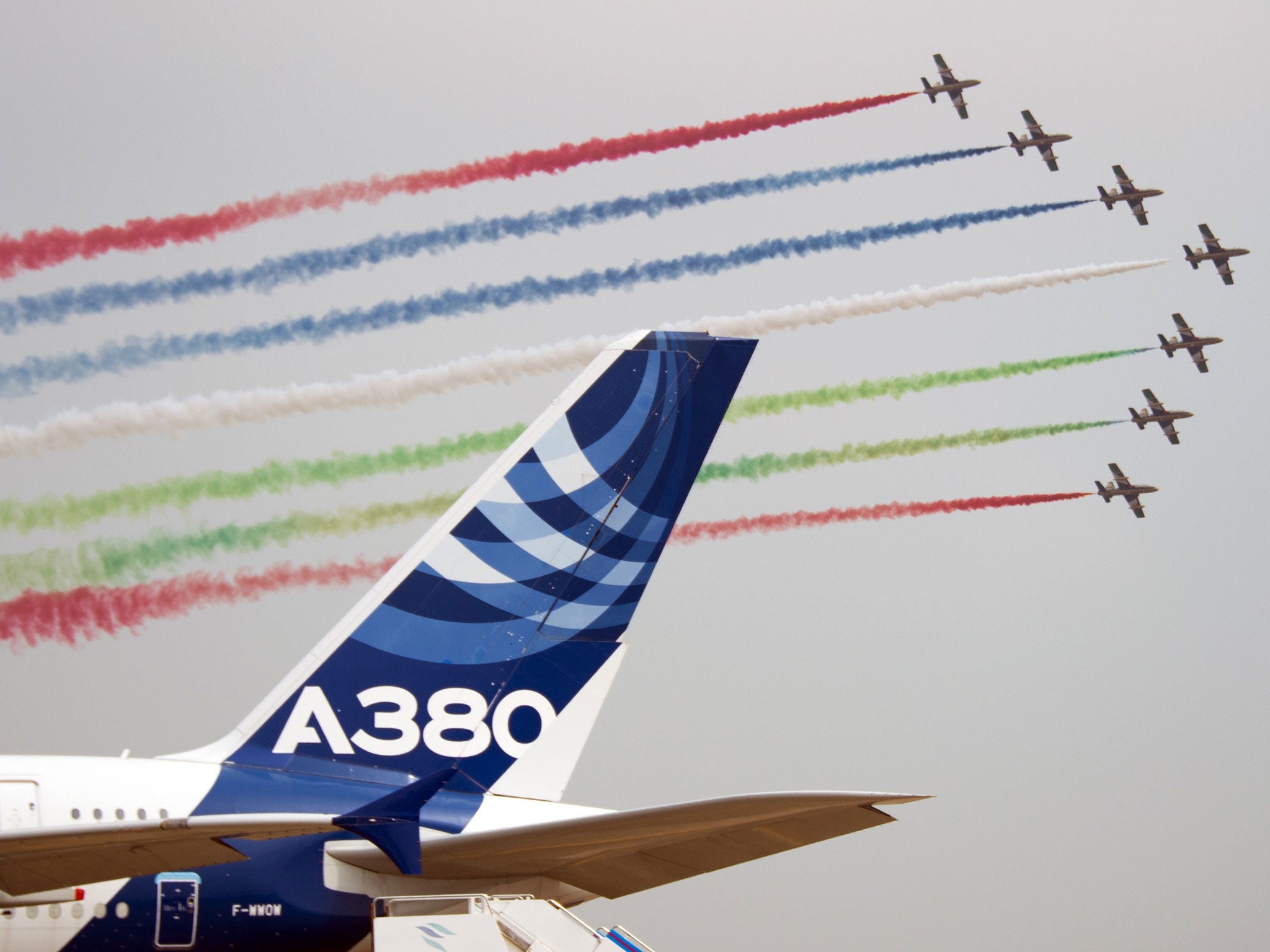How Airbus’s bet on big went awry
The European aircraft manufacturer has not sold a single one of its A380 superjumbos so far this year. And there are rumours that it may need more taxpayer support to salvage things

Toulouse is always beautiful in August. But for staff at the Airbus HQ there, last week was particularly sweet. British Airways and its sister airlines Iberia and Vueling signed orders for 31 spanking new aircraft to add to their fleets.
The shopping list was hefty, including 11 wide-bodied planes to drive Iberia’s new long haul routes, and smaller craft to replace the carriers’ older, short-hop European workhorses.
However, while the sale of the A350 and A320 planes was welcome, yet again, there was no A380 superjumbo on the list.
The deal was far from alone. For the miracle of engineering that is the A380 has not had a single new order all year.
While Airbus figured it was being super canny in developing a plane that could carry a skyscraper-full of people – 853 in its latest configuration – the airlines themselves have begged to differ.
Airbus took a gamble an aeronautical generation ago that the biggest growth in traveller numbers would be among those wanting to fly from one major hub airport to another. The hubs would become increasingly busy as the world’s “mega cities” grew and grew, with ever rising competition for access to takeoff and landing slots. More people to bigger airports meant one requirement: bigger planes.
It got to work designing and building the hugest beast it could possibly keep in the air.
Boeing, on the other hand, predicted that while long haul would grow, people would want to fly direct to a large and growing range of new destinations. Airlines would need long haul planes that were smaller and easier to fill. Focus on making them fuel efficient, and you could still make routes profitable without cramming 800 people on every flight.
It created the mid-sized, super-light 787 Dreamliner.
Airbus’s guess proved correct in part – city populations like London, New York, Dubai have expanded hugely. Airports like Heathrow have become congested.
But, as aviation industry analyst Professor Keith Hayward says: “Boeing got it more right than Airbus.”
Demand for the A380, while initially strong for a limited number of routes, has ground to a halt as airlines decide they either can’t fill the monster plane or find enough airports big enough for it.
Just before Christmas, a senior Airbus director let slip that it was possible, if no new orders came in, that the whole A380 project could be canned. While he was quickly slapped down by his superiors, he was only saying what many in the industry had been thinking for a while.
Now, eight months down the line, and with still no orders, such speculation has been getting louder.
It’s not that customers aren’t satisfied with their $411m-a-pop superjumbos. Emirates – by far the biggest customer, with orders for 140 – raves about them. Nobody was more furious than Emirates at those stories last December about Airbus pulling the plug.
It’s just that airlines don’t want as many as Airbus predicted. As one analyst says: “It seems to me they alighted on a product first, then found the forecasts to justify it.”
Airbus counters that it has absolutely no intention of scrapping the A380. Fans of the plane point out that it is still very early days. The Boeing 747 Jumbo Jet got off to a slow start amid similar questions. Now, 1500 jumbos and 45 year later, it has turned out to be one of the most successful planes ever.
Airbus says its factories still have at least a year and a half’s-worth of work ahead of them just building the remaining half of the 317 A380s that have been ordered but not yet delivered.
That means an awful lot of jobs and skills. In the UK alone, Airbus wing manufacturing employs, directly and indirectly, around 100,000 workers. With that, inevitably, comes an awful lot of clout with local governments.
The prospect of a prestigious and European creation like the A380 attracted huge support from taxpayers – nearly £2bn in total was given in “repayable launch investment” loans from France, Germany, Spain and the UK.
Britain’s £530m share is supposed to be repaid through royalties when the A380 starts making a profit, but the complete absence of any orders this year is leading to growing speculation that Britain will never get its money back.
Emirates is now pushing for Airbus to upgrade the plane, making it more fuel efficient. It has suggested it might order 100 more if they were cheaper to run. While that would safeguard the A380’s future, it would also cost Airbus yet more billions of euros in development costs, requiring more taxpayer support.
Talks for such loans are said to have begun between the company and various European ministers including business minister Sajid Javid, although Airbus denies this.
Now, Mr Javid, and Airbus, must decide whether investing even more into the A380 would be throwing good money after bad.
Subscribe to Independent Premium to bookmark this article
Want to bookmark your favourite articles and stories to read or reference later? Start your Independent Premium subscription today.

Join our commenting forum
Join thought-provoking conversations, follow other Independent readers and see their replies